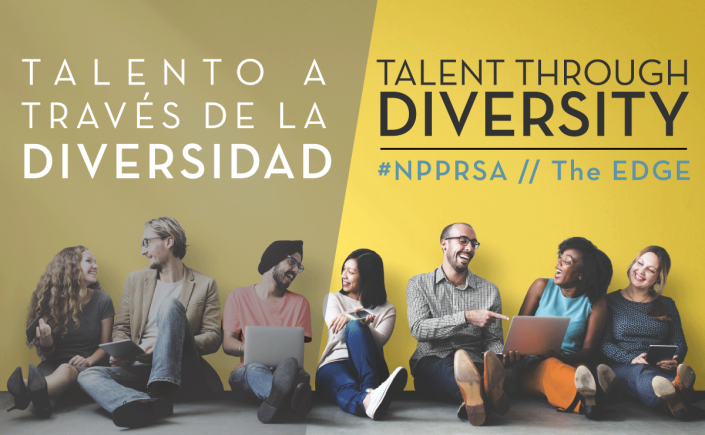This post is part of our Diversity Month series! Enjoy a translated version of this article below.
¿Qué significa hablar de diversidad laboral en Latinoamérica?
Cuando los latinos nos hacemos esta pregunta, no pensamos necesariamente en diferencias por razas o por el color de piel al momento de una contratación laboral. Es más, nuestra cultura latina ya es diversa y es un keypoint de análisis para si misma. Sin embargo, existe otro enfoque a la diversidad latina, como lo es la edad laboral, los estratos sociales, las carreras profesionales, el género y demás grupos minoritarios que deben convivir con una historia y un contexto muy encarnado en su gente.
UN POCO DE CONTEXTO…
Latinoamérica es una región donde el machismo es celebrado en las mesas de los almuerzos de manera directa o indirecta y donde el estereotipo de macho latino se vuelve un ideal. Poner adelante el rol de la mujer en Latinoamérica, una región de ingreso medio, se vuelve complicado, ante altos niveles de desigualdad y exclusión social. De acuerdo con el Informe sobre Desarrollo Humano para América Latina 2010, en esta región se encuentran 10 de los 15 países con mayores niveles de desigualdad del mundo. La seguridad pública es una preocupación creciente; surgen nuevas formas de violencia contra las mujeres y el femicidio es cada vez más habitual.
“La brecha de género en las remuneraciones de América Latina y el Caribe es del 19%, comparado con el 24% a escala mundial”.
El Progreso de las mujeres en el mundo 2015- 2016, ONU.
Latinoamérica también es bien conocida por sus grandes brechas de estratos sociales y su mera convivencia en un mismo espacio geográfico, tal es el caso de las favelas en Brasil, o de los asentamientos humanos en Perú. Estos estratos no hay que verlos solamente por el nivel de adquisición económica, sino también por el entorno cultural que muchas veces representan en el desarrollo de competencias sociales y preocupaciones de los gobiernos latinoamericanos.
“La desigualdad se puede disminuir mediante la inversión en educación, el rol de la mujer y programas sociales, ya que estos son responsables de la reducción de la desigualdad en un 15% en América Latina”.
Jim Yong Kim, presidente del Banco Mundial.
Sin duda alguna, ante estas cifras y contexto descrito se vuelve complicado aún tener empresas o instituciones meramente latinoamericanas que conversen como prioridad mecanismos de diversidad laboral. Sin embargo, si hay buenas luces en este tema, el liderazgo viene de tendencias o empresas transnacionales y multilatinas quienes ya son sponsors de grupos minoritarios o adoptan políticas de diversidad con el fin de lograr una cultura que permita una escala de tolerancia en donde se aprecie la diferencia y agregue valor en el logro de los resultados de cada industria.
Para este sector, atraer talento de diferentes entornos produce equipos de trabajo más creativos y flexibles, apalancando la innovación y el aprovechamiento del mejor potencial de los colaboradores para el logro de los resultados.
Esto significa poder ver la selección de la fuerza de trabajo basado en la valoración del talento a través de competencias, sin distinción de género, orientación sexual, edad, estado civil, apariencia física, nacionalidad, religión, discapacidad, pensamientos, creencias e ideologías; entre otros. Además de involucrar un lenguaje incluyente en las comunicaciones con sus grupos de interés y preocuparse por cerrar esa brecha social, producto del contexto ya descrito, es también importante la formación de sus líderes, impulsándolos a formar capacidades en la gestión de la diversidad y la inclusión.
Si esta visión recién se está formando en las sedes latinas de empresas transnacionales y aquellas multilatinas que buscan liderar la industria, el despliegue natural en el resto de organizaciones debería ser progresivo y esperar con el tiempo una cultura de trabajo que aprecia la diversidad de generaciones, el multiculturalismo y la equidad de género.
BUENOS EJEMPLOS EN LATINOAMÉRICA:
Nestlé (México):
Para Nestlé México hablar de diversidad es iniciar por temas de inclusión entre el 2010 y 2011 implementaron el “Programa de Sensibilización e Inclusión Laboral”, diseñado para fomentar mayor diversidad y espíritu de equipo en el lugar de trabajo.
Esto permitió a Nestlé convertirse en el mayor empleador de personas con discapacidad en México durante más de un año. Logrando que una quinta parte de los colaboradores de uno de sus call centers de la compañía sean personas con discapacidad.
Además, el call center, que atiende más de 230,000 preguntas de sus consumidores al año, ha mejorado significativamente su desempeño desde el inicio del programa. Obteniendo niveles de satisfacción por parte del cliente en un 94%, mientras que la tasa de rotación de personal se ha reducido a la mitad.
Alicorp (Perú):
Para Alicorp Perú, diversidad es también fomentar el empleo e incluir a poblaciones en situaciones de vulnerabilidad a su fuerza laboral y con ello aportar a la situación de desempleo juvenil del Perú. En línea con ello, Alicorp implementó el primer programa de capacitación en el sector de industrias alimentarias, Capacitación Laboral Juvenil (CLJ). Este programa además de fomentar el empleo, permite que los jóvenes reclutados reciban educación técnica en industrias alimentarias y reciban un certificado ocupacional que contiene las competencias laborares desempeñadas en el puesto de trabajo.
Esta iniciativa está dirigido a jóvenes entre 18 a 22 años de edad, quienes provienen de familias con escasos recursos económicos, que no cuentan con experiencia laboral y no han culminado sus estudios técnicos o universitarios.
Nutresa (Colombia):
Cuando una empresa logra incorporar en su ADN la promoción de la diversidad se logran grandes resultados. Tal es el caso de Nutresa en Colombia, quien a través de su política de diversidad e inclusión vino trabajando desde el 2014 el concepto de “igualdad de oportunidades para todos”.
De esta manera trabajaron la norma de equidad de género, que ha permitido identificar oportunidades en la generación de prácticas laborales que satisfagan las necesidades de hombres y mujeres sin distinción de género.
También se actualizaron la política de selección, que dejó expresa la posibilidad de participación en igualdad de oportunidades, de hombres y mujeres, en los procesos de selección. Asimismo, en su política y sistema de valoración salarial no consideran el género como variable para la asignación de puntos. Tampoco utilizan las cuotas como mecanismo de aseguramiento de la equidad de género para evitar discriminaciones negativas. Por el contrario, se usa activamente la política de inclusión y diversidad, la de selección y la de formación, con el fin de asegurar una actitud auténtica de oportunidades para todos.
UNA GRAN RECOMENDACIÓN… SEAMOS PATROCINADORES DE LA DIVERSIDAD.
Muchos de nosotros trabajamos de la mano de comunidades y elevamos su voz para que sean escuchadas, es entonces cuando debe partir de nosotros el dejar de lado ciertos estereotipos y prejuicios que no sean coherentes con lo que promueve nuestra profesión y por ende que no permita lograr un mayor entendimiento y trabajo con nuestros públicos.
El siguiente salto es ser promotores a partir del cambio de contexto y problemáticas sociales. Muchas veces hablar de diversidad solamente no es el principal vehículo si no hay un contexto claro y definido en nuestro entorno, pues el mensaje se vuelve denso e ilusorio. Por ello, debemos atacar aquellos conflictos o sesgos desde su concepción, nosotros como gestores de relaciones y comunicación, podemos perfilar y pensar en una comunicación inclusiva y de mayor valor para la sociedad.
Desde ahí nos volvemos principales sponsors de la diversidad en nuestro entorno.

Angel Rodríguez is an Analyst of Public Affairs and Suistainable Development at Alicorp in Peru. He is a graduate of Universidad de San Martín de Porres where he served as Chapter President of PRSSA in 2014 . Angel supports different volunteer and diversity initiatives in vulnerable settlements in Lima, Peru. Connect with Angel on Twitter, through his LinkedIn or by emailing him.
Talent Through Diversity
What does it mean to speak about labor diversity in Latin America?
When Latinos ask us this question, we don’t necessarily think of differences by race or skin color at the time of labor recruitment. Moreover, Latin culture is already diverse and is a keypoint of analysis for itself. However, there is another approach to the Latino diversity, such as the working age, social strata, careers, gender and other minority groups who must live with a history and a context very embodied in its people.
A little background …
Latin America is a region where machismo is celebrated at lunch tables directly or indirectly and where the Latin macho stereotype becomes an ideal way. Highlight the role of women in Latin America, a region of median income, and it becomes complicated against high levels of inequality and social exclusion. According to the 2010 Human Development Report for Latin America, this region contains 10 of the 15 countries with the highest levels of inequality in the world. Public safety is a growing concern and new forms of violence against women and femicide have already increased.
“The gender gap in salaries in Latin America and the Caribbean is 19%, compared to 24% worldwide.”
Progressive women worldwide 2015- 2016, UN.
Latin America is also well known for its large gaps in social strata and their mere coexistence in the same geographical space, as in the case of the favelas in Brazil, or human settlements in Peru. These strata should not be seen only by the level of economic acquisition, but also by the cultural environment that often represented in the development of social skills and concerns of Latin American governments.
“Inequality can be reduced by investing in education, the role of women and social programs, since these are responsible for reducing inequality by 15% in Latin America.
Jim Yong Kim, president of the World Bank.
Undoubtedly, against these figures and described context, it becomes complicated to have companies, or merely Latin American institutions, prioritize mechanisms for labor diversity. However, there is hope in this issue, leadership comes from trends of transnational corporations and multinationals companies who are already sponsors of minority groups or adopt diversity policies in order to achieve a culture that allows a tolerance scale where the difference is appreciated and add value in achieving the results of each industry.
For this sector, attracting talent from different backgrounds develops more creative and flexible teams, by leveraging innovation and harnessing the best potential partners for achieving results.
This means to see the selection of the workforce based on the valuation of talent through competitions, regardless of gender, sexual orientation, age, marital status, physical appearance, nationality, religion, disability, thoughts, beliefs and ideologies; among others. Besides involving inclusive language in communications with its stakeholders and worrying about closing the social gap, resulting from the context described above, it is also important to train its leaders, urging them to build capacity in managing diversity and inclusion.
If this vision is just being formed in Latino headquarters of transnational companies and those multinationals who seek to lead the industry, the natural unfolding in other organizations should be progressive and eventually produce a workplace culture that values diversity of generations, multiculturalism and gender equity.
GOOD EXAMPLES IN LATIN AMERICA:
Nestlé (México):
For Nestle Mexico, in order to talk about diversity issues, they decided to start labor inclusion. Between 2010 and 2011 they implemented the “Program for Awareness and Inclusion Labor,” designed to encourage greater diversity and team spirit in the workplace.
This allowed Nestlé to become the largest employer of people with disabilities in Mexico for over a year, reaching a fifth of the employees of one of its call centers to include people with disabilities.
In addition, the call center, which serves more than 230,000 questions from consumers annually, has significantly improved its performance since the program’s inception. Getting satisfaction levels by the customer by 94%, while the turnover rate has been halved.
Alicorp (Perú):
For Alicorp Peru, diversity is also promoting employment and include populations in vulnerable situations across their workforce and therefore contribute to the situation of youth unemployment in Peru. In line with this, Alicorp implemented the first training program in the field of food industries, Capacitación Laboral Juvenil (CLJ). This program will also promote employment. It allows young recruits to receive technical education in food industries and receive an occupational certificate containing the labor skills performed in the workplace.
This initiative is aimed at 18- to 22-year-old, who come from families with low income, who do not have work experience and have not completed their technical studies or university.
Nutresa (Colombia):
When a company manages to incorporate into their DNA promoting diversity, great results are achieved. Such is the case of Nutresa in Colombia, who through its policy of diversity and inclusion started implementing since 2014 the concept of “equal opportunities for all.”
In this way, they developed the norm of gender equality, which has identified opportunities in the creation of labor practices that meet the needs of men and women regardless of gender. The recruitment policy, which expresses the possibility of participation in equal opportunities for men and women in the selection process, was also updated.
Its salary policy and valuation system do not consider gender as a variable for assigning points. Neither utilize quotas as a means of ensuring gender equity to avoid negative discrimination. By contrast, its policy of inclusion, diversity, selection and training in order to ensure a true attitude of opportunities for all, is widely accepted.
A great recommendation … LET US BE SPONSORS OF DIVERSITY.
Many of us work hand in hand with communities and raise their voice to be heard, and it must come from us to leave aside certain stereotypes and prejudices that are inconsistent with what promotes our profession and therefore prevents greater understanding and working with our stakeholders.
The next hop is to be promoters from the change of context and social issues. Often only talking about diversity is not the main vehicle for change if there is no clear context and framework to our area because the message becomes dense and illusory. Therefore, we must attack those conflicts or biases at its inception.
As managers of communication and relationships, we can think and manage an inclusive and more valuable communication for our society. From there we become main sponsors of diversity in our community.

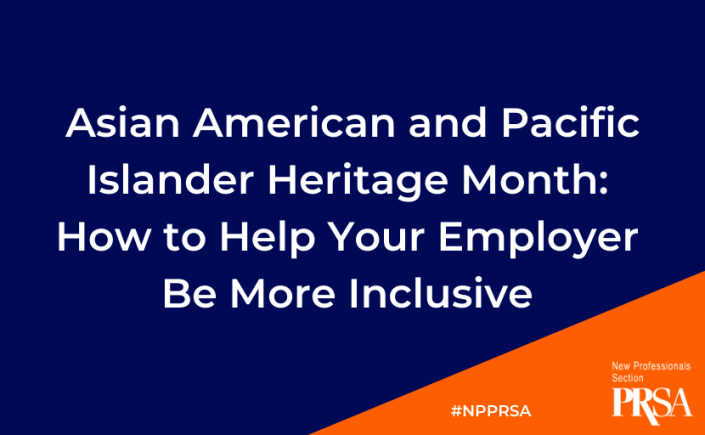
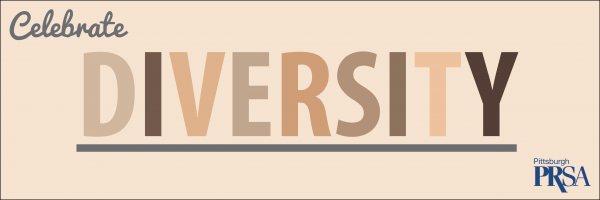

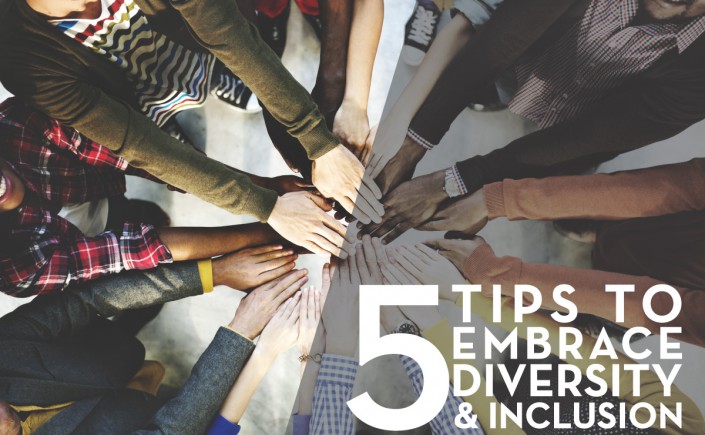
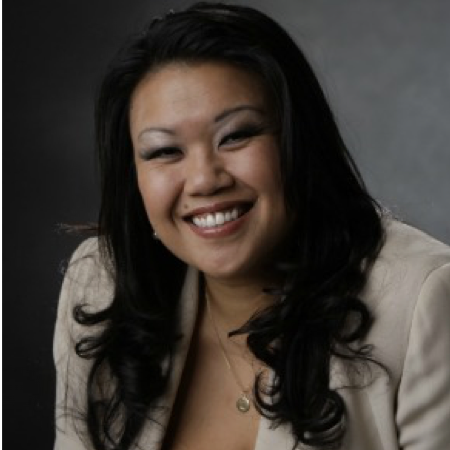
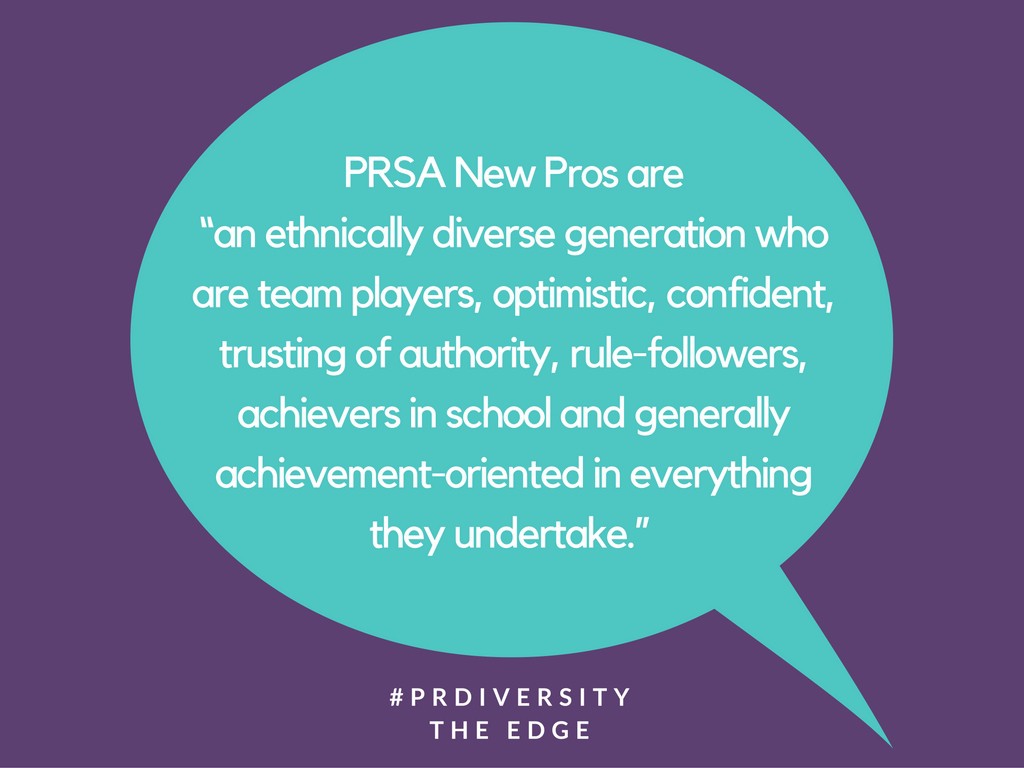
 Robyn Rudish-Laning is a member of South Carolina’s PRSA chapter and is communications coordinator for the South Carolina Council on Competitiveness. Robyn is also a member of the New Professionals executive committee and is a two-time graduate of Duquesne University who currently lives in Columbia, SC. You can connect with her on
Robyn Rudish-Laning is a member of South Carolina’s PRSA chapter and is communications coordinator for the South Carolina Council on Competitiveness. Robyn is also a member of the New Professionals executive committee and is a two-time graduate of Duquesne University who currently lives in Columbia, SC. You can connect with her on 